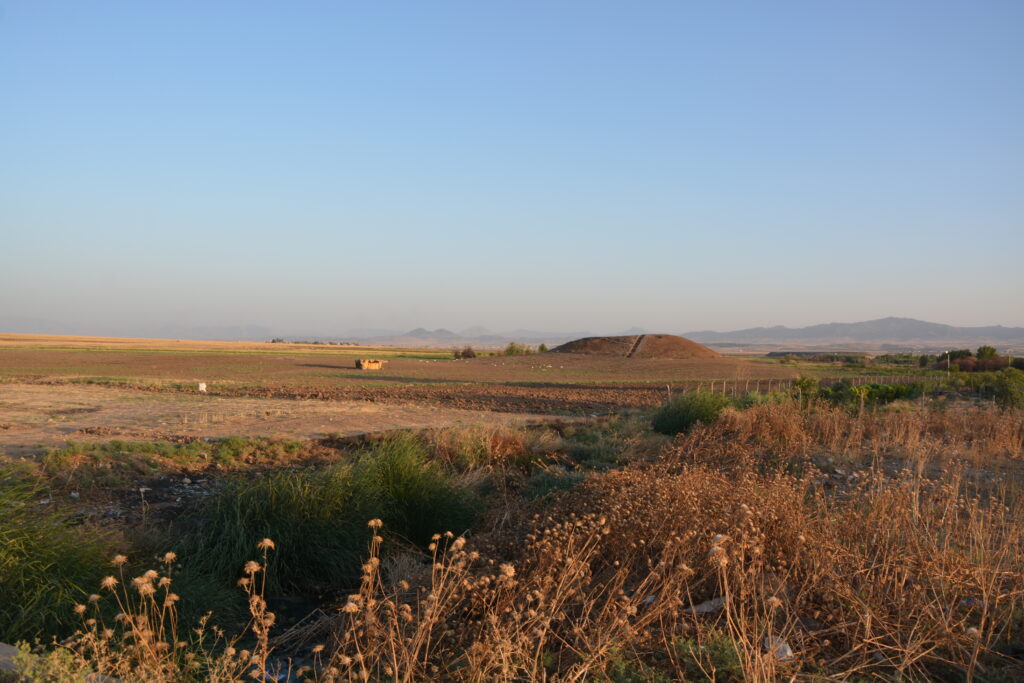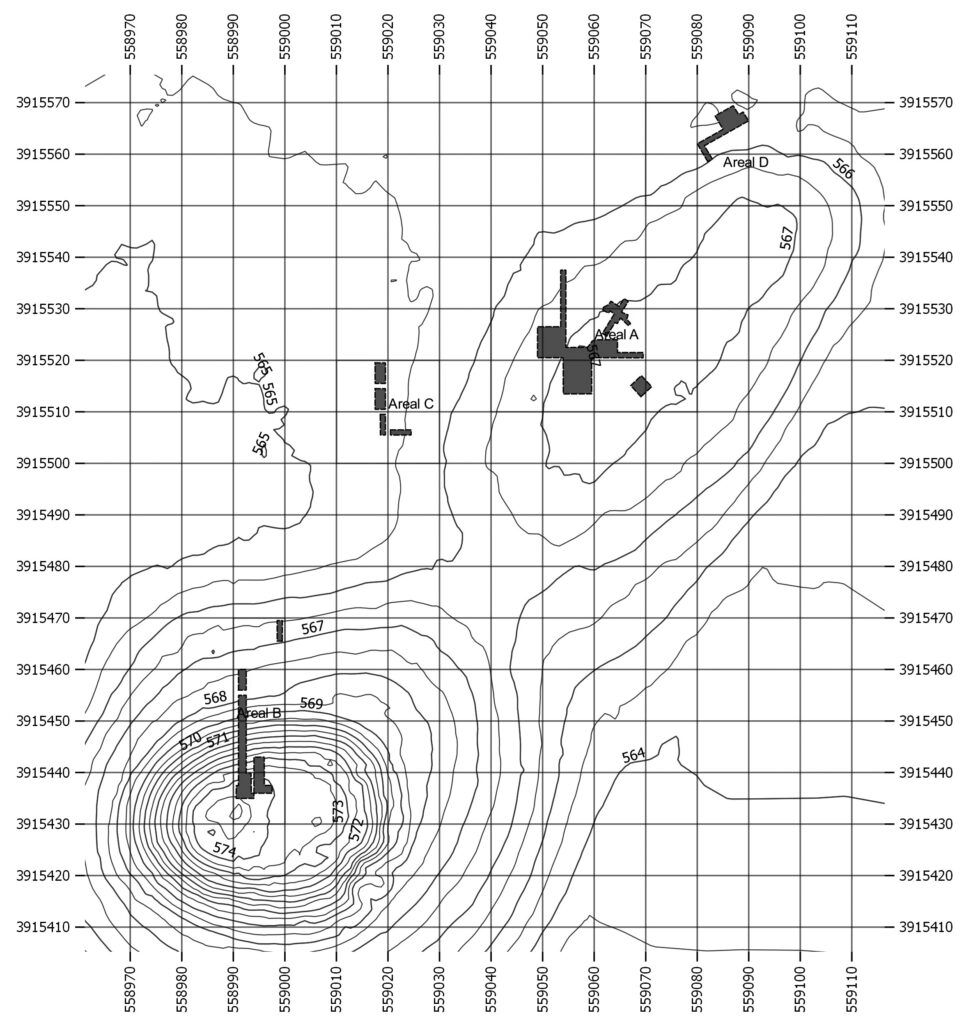Kazhaw
Girdi-i Kazhaw
Kazhaw is situated at the northwestern edge of the Shahrizor, near the modern village of Bestansur and a large spring, which even today is of importance for the water supply of the region. The site consists of two mounds extending across an area of 4 ha. Mound A in the north is only 2–3 m in height and of oval shape while Mound B in the south is up to 10 m in height and almost circular. In 2014 Jörg Fassbinder did a magnetic survey of the site followed by excavations conducted in 2015 and 2016 under the direction of Adelheid Otto and Alexander Tamm.

In the centre of Mound A remains of a large building with limestone-pillars were exposed. The pottery found in situ and in the rubbish layers above the floor indicates a late Sasanian date. On the hilltop of Mound B, Islamic graves were found near the modern surface. Directly underneath, remains of a small fortification were uncovered, which dates to the late Sasanian era. Further areas – Area C and D – were excavated at the northern and western fringes of Mound A. Only remains of heavily eroded structures were uncovered here. Due to the intermingling of material from different periods, it is difficult to draw any conclusions about their dating. Earlier structures, dating to the 2nd millennium BCE, were uncovered in all excavation areas.

